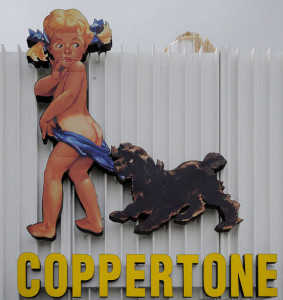 The Boston Museum of Fine Arts has a new exhibit by Curator Lauren Whitley “Hippie Chic.” The exhibit profiles the street styles and the couture of 1960s and 1970s alternative culture that produced an “eclectic, highly individual look, mixing vintage and ethnic clothing with fashions inspired by contemporary psychedelic Pop art, nature, fantasy, and ethnographic art.” Take a look at the video and slide show here.
The Boston Museum of Fine Arts has a new exhibit by Curator Lauren Whitley “Hippie Chic.” The exhibit profiles the street styles and the couture of 1960s and 1970s alternative culture that produced an “eclectic, highly individual look, mixing vintage and ethnic clothing with fashions inspired by contemporary psychedelic Pop art, nature, fantasy, and ethnographic art.” Take a look at the video and slide show here.
In an interview with National Geographic, Whitley observes that the fashion was anti-fashion, even as it was picked up by couture. She notes that part of the hippie style was not only clothes, but also hair: “Long hair was defining. If you had long hair, you were called hippie, even if you weren’t.”
Hair and hippies were not only fashion statements, they were also constitutional issues. The play HAIR went to the United States Supreme Court in Southeastern Promotions, Ltd. v. Conrad; the Court decided in 1975 that the directors of the Chattanooga Memorial Auditorium, a municipal theater in Tennessee, unconstitutionally rejected an application to stage the play with its brief nude scene.
However, the United States Supreme Court refused to grant certiorari in at least nine male hair length cases involving students, often over a dissent by Justice William O. Douglas who opined that these cases produced a conflict in the circuits that was deep, irreconcilable, and recurrent, with the federal court “decisions in disarray. The judges had great difficulty discerning whether hair length regulations for boys – – – but not girls – – – constituted a sex equality issue just as they had great difficulty understanding whether or not hair length was sufficiently expressive to meet the threshold for a First Amendment claim. A fuller discussion appears in chapter 3 of Dressing Constitutionally.
[image, recognizable 1960s icon, via]
 Are toddlers on the Jersey Shore at risk of arrest for public nudity? Trentonian columnist Jeff Edelstein thinks so. As he tells the story, Edelstein and his wife, after a visit to the beach at Spring Lake, New Jersey, removed the bathing suits of their two- and four-year-old children at the public shower. A “beach supervisor” called the police, who let them leave with a verbal warning.
Are toddlers on the Jersey Shore at risk of arrest for public nudity? Trentonian columnist Jeff Edelstein thinks so. As he tells the story, Edelstein and his wife, after a visit to the beach at Spring Lake, New Jersey, removed the bathing suits of their two- and four-year-old children at the public shower. A “beach supervisor” called the police, who let them leave with a verbal warning. 






